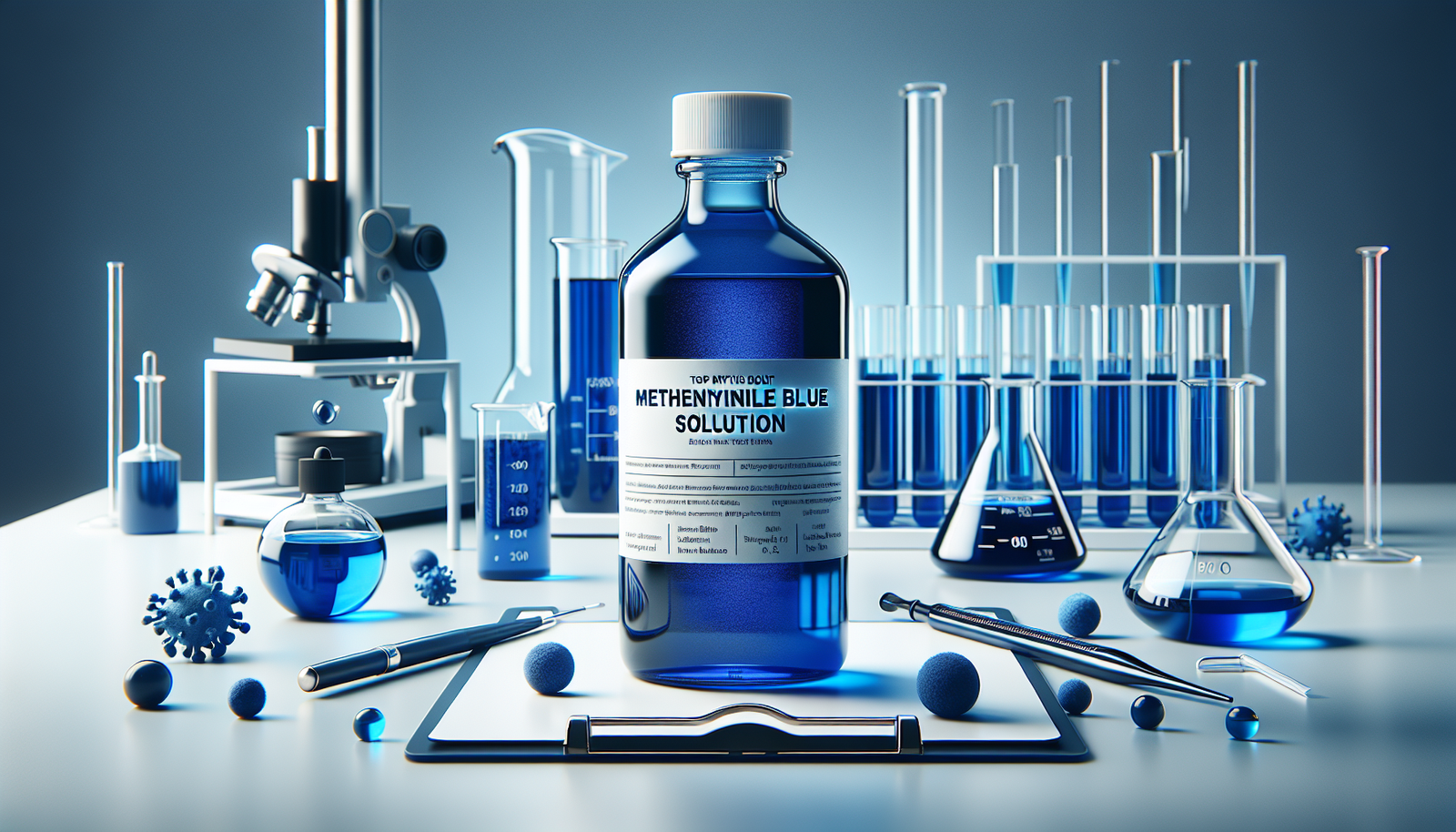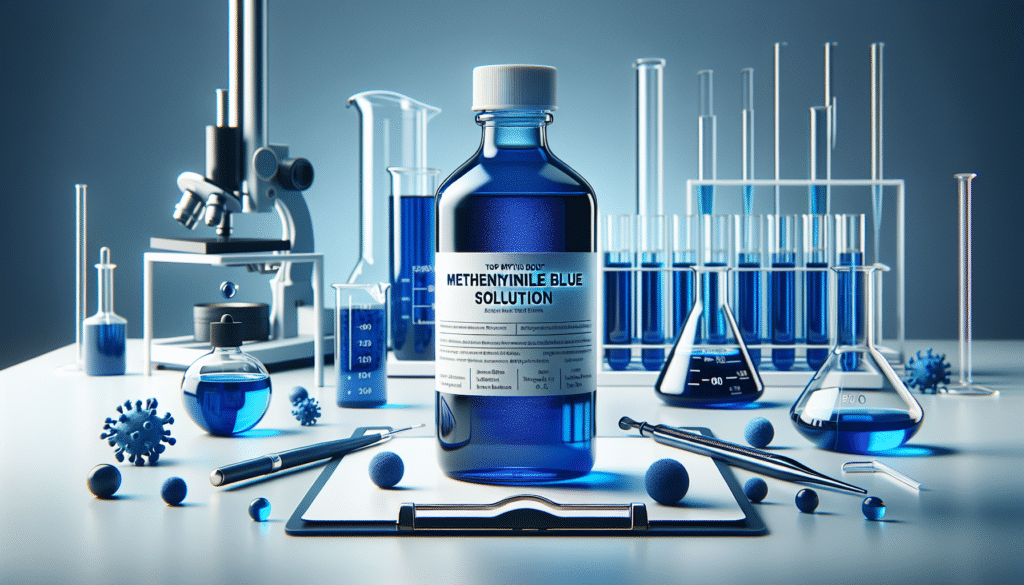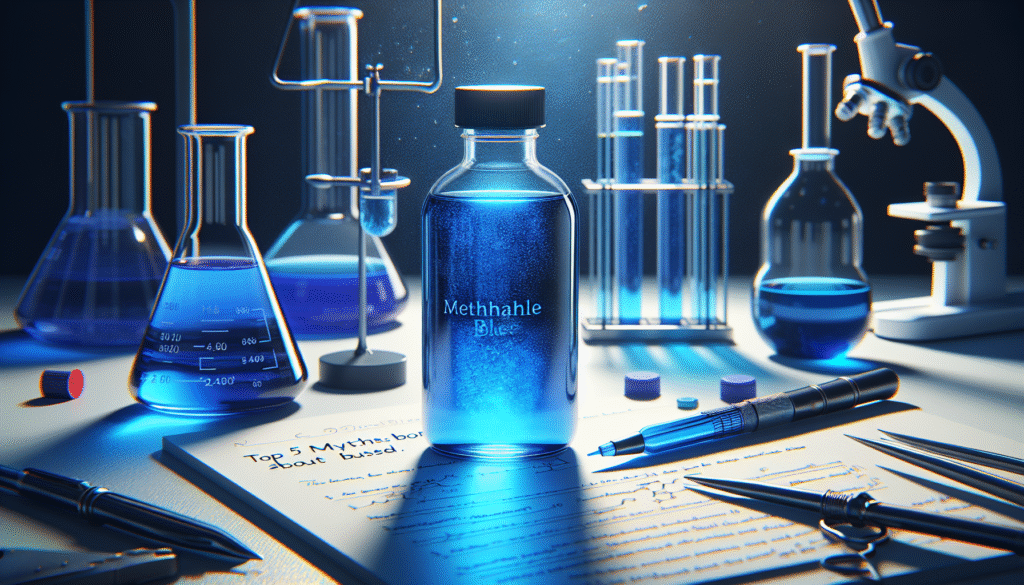
What are the misconceptions you hold about Methylene Blue? The realm of science often gives rise to myths, particularly surrounding substances with varied applications, such as Methylene Blue. This compound has been utilized in medicine, biology, and even as a dye, yet misunderstandings about its nature and efficacy abound. Understanding the facts surrounding Methylene Blue can empower you to make informed decisions. In this article, we will address the top five myths around Methylene Blue and clarify the scientific truths behind them.
Myth 1: Methylene Blue is Just a Dye
Understanding Methylene Blue’s Purpose
Methylene Blue was originally synthesized as a textile dye in the 19th century. It quickly found its way into the medical community due to its unique properties. While it is indeed a dye, classifying Methylene Blue solely as one diminishes its versatility and significance in various applications.
Medical Applications
Methylene Blue has significant medical applications, particularly in the treatment of certain medical conditions. It has been employed as an antidote for cyanide poisoning and is used to treat methemoglobinemia—a condition where hemoglobin cannot efficiently release oxygen. Moreover, it is being studied for its potential neuroprotective effects.
| Application | Description |
|---|---|
| Antidote for Cyanide | Neutralizes cyanide toxicity |
| Treatment for Methemoglobinemia | Restores normal hemoglobin function |
| Neuroprotective Research | Investigated for benefits in neurodegenerative diseases |
Understanding Methylene Blue solely as a dye fails to acknowledge its critical roles in medical practice and research.
Myth 2: Methylene Blue is Unsafe for Use
Safety Profile
Concerns surrounding the safety of Methylene Blue often stem from its history of use and anecdotal reports. While any compound can pose potential hazards if misused, when utilized as directed, Methylene Blue presents a favorable safety profile in medical settings.
Common Side Effects
The most notable side effects include urination that may turn blue or green and possible gastrointestinal disturbances. However, these side effects are generally minor and do not outweigh the compound’s benefits when used correctly.
| Common Side Effects | Description |
|---|---|
| Discoloration of Urine | Temporary and harmless |
| Gastrointestinal Issues | Mild and often resolve quickly |
When administered by healthcare professionals, Methylene Blue remains a reliably safe therapeutic option.

Myth 3: Methylene Blue is a Cure-All
Misunderstanding Efficacy
Another prevalent myth is that Methylene Blue can be utilized as a universal remedy for various ailments. While it is effective for certain conditions, it is not an all-encompassing solution for health issues.
Evidence-Based Use
Methylene Blue should only be used for specific conditions where research supports its use. Utilizing Methylene Blue irresponsibly, without appropriate clinical justification, poses risks without guaranteed benefits.
| Condition | Evidence of Efficacy |
|---|---|
| Cyanide Poisoning | Strong evidence |
| Methemoglobinemia | Clinically validated |
| Neurodegenerative Disorders | Emerging studies, but not conclusive |
Your reliance on Methylene Blue as a catch-all treatment can lead to disappointment or adverse effects. Always prioritize evidence-based medicine for health interventions.
Myth 4: Methylene Blue Has No Role Beyond Medicine
Broader Applications
Methylene Blue’s contributions extend beyond the realm of medicine. It has shown potential in various scientific fields, including environmental science and microbials.
Role in Research
Researchers use Methylene Blue in laboratory settings as a staining agent in microscopy. Its ability to absorb light and bind to biological tissues allows for improved visualization of cells and processes.
| Scientific Field | Application |
|---|---|
| Biology | Cellular staining |
| Environmental Science | Indicator in research studies |
| Microbiology | Enables visualization of pathogens |
Understanding Methylene Blue’s capabilities across various domains reinforces its value as more than just a medical agent.

Myth 5: Methylene Blue is Only for Adults
Demographics of Use
Some individuals believe that Methylene Blue is exclusively appropriate for adults. While research primarily focuses on adult applications, this myth overlooks pediatric considerations.
Pediatric Use
Methylene Blue can be used in children, particularly for conditions like methemoglobinemia. Dosages may differ based on age, weight, and the specific condition being treated. Medical professionals are equipped to determine appropriate use in pediatric populations.
| Age Group | Dosage Consideration |
|---|---|
| Infants | Cautious dosing |
| Children | Adjusted for weight and condition |
| Adolescents | Similar to adult considerations |
As a parent or caregiver, it is critical not to dismiss the use of Methylene Blue solely due to age. Discuss any concerns with qualified medical professionals.
Conclusion
With Methylene Blue at the center of various myths, it is essential to underscore the importance of accurate information. The five myths discussed provide insight not just into what Methylene Blue is, but how it functions in your body and your health decisions.
Methylene Blue is not merely a dye; it is a multifaceted compound with relevant medical, research, and experimental applications. It is generally safe when used appropriately, but it is not a universal cure. Its role spans beyond medicine into scientific research and educational fields. Lastly, it is important to remember that age should not deter effective treatment when warranted.
By dismantling these myths, you position yourself to engage critically with scientific materials and make informed decisions related to Methylene Blue. Your understanding of these factors is a vital step toward better navigating the complexities of health and science.